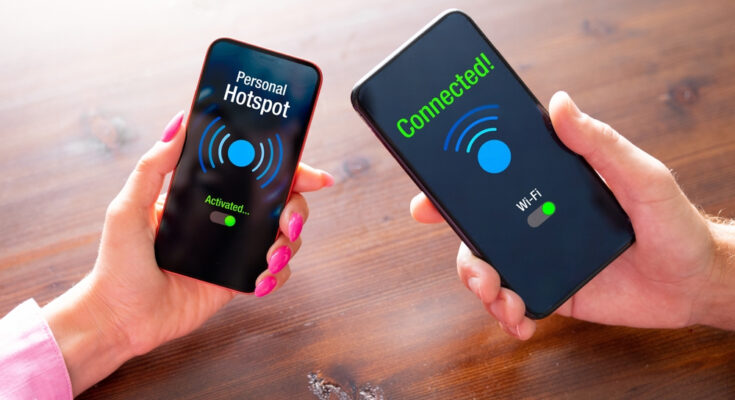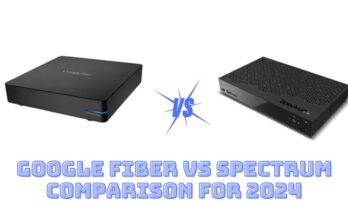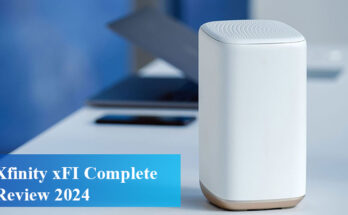It can be frustrating when you’re out and about, traveling, and trying to access the internet, but your smartphone just doesn’t have enough juice to keep up. Fear not, though! In this article, we’ll show you two different ways you can use your smartphone internet connection to supplement the limited bandwidth you might have at your disposal.
First, we’ll talk about using hotspots—these are public wireless networks that let you connect to the internet without having to pay for a service. Second, we’ll show you how to tether—this is a way of connecting your smartphone to your computer, tablet, or phone so that it can access the internet through your device’s stronger connection.
Hotspots and Tethering Explained
A hotspot is a private network that allows you to share your smartphone internet connection hotspot with other devices. This is done by connecting your phone to the hotspot and then using the hotspot’s internet connection.
Tethering is the process of using a wire or wireless connection to connect one device to another in order to increase the amount of data transfer that can be done. This can be done in two ways: through a tethering app or by connecting your phone to a computer using a USB cable.
Both methods have their own benefits and drawbacks. Tethering through an app has the advantage of being more customizable since you can set up different profiles for different devices. However, this also means that you are limited to what sorts of apps you can use and how much data you can transfer per hour.
Tethering through a USB cable has the advantage of being more secure and continuous. However, it can take longer to set up and is less flexible than tethering through an app.
Tethering Over Wi-Fi
Tethering over Wi-Fi is a great way to share your smartphone internet connection with other devices. Hotspots and tethering are both methods of connecting your smartphone to the internet over a Wi-Fi network.
Hotspots are like public Wi-Fi networks that you can find at coffee shops, airports, and other places. Tethering uses your smartphone’s own wireless connection to connect to a hotspot. This means that you can use your smartphone internet connection while you’re connected to the hotspot.
Tethering Over A USB Cable
Smartphones provide a USB tethering feature. Connect them to a laptop, or even a computer via USB—your phone can then connect to the internet. However, this method is faster than Wi-Fi (because it’s wired), and the USB cable provides power for your phone from the laptop. You don’t have to set up Wi-Fi, and you can even connect computers that are without Wi-Fi. However, you can not connect more than one phone at a time via USB tethering. You will have to install the appropriate drivers.
Tethering Over Bluetooth
With Bluetooth, it is possible to share a smartphone’s mobile data connection with other devices such as laptops or tablets. This is called PAN or Bluetooth personal area network. The process of pairing Bluetooth devices can be more complex and take longer than simply connecting to a Wi-Fi hotspot. However, using Bluetooth may help conserve battery life and make it useful in situations where you want less frequent tethering.
To tether using Bluetooth, your phone and computer must have Bluetooth enabled and be within range of each other. On your phone, open the Settings app and select Connection > Tethering. On the computer, open the Network and Sharing Center and click Connect to Network. In the dialogue box that appears, type in the IP address of the phone (12.34.56.78 in this example) and click OK. The phone should now appear as an available network connection on the computer.
How does a smartphone internet connection connect to a computer?
If you are using a smartphone or tablet to access the internet. You may be wondering how to share your device’s internet connection with other devices in your home. There are a few different ways to do this, and each has its own benefits and drawbacks.
One way to share your internet connection is to use a hotspot. A hotspot is a Wi-Fi network that you can connect your smartphone or tablet to using the cellular network. This method is useful if you need to use the internet on multiple devices in your home without having to connect each device to the internet separately.
Another way to share a smartphone internet connection is by tethering. Tethering is similar to using a hotspot, but it uses the data plan on your smartphone or tablet as opposed to the cellular network. This means that tethering is faster than using a hotspot. But it can also be more expensive because it uses up your data plan faster.
Conclusion
By using hotspots and tethering, you can keep your smartphone connected while away from home or the office. Internet connection hotspot is easy to find and use—all you need is a Wi-Fi network and an Android or iPhone with the Hotspot app installed. Tethering is a little more complicated. But it allows you to connect your smartphone directly to your computer via a USB cable. Both methods provide an alternative way for you to stay connected while on the go.



